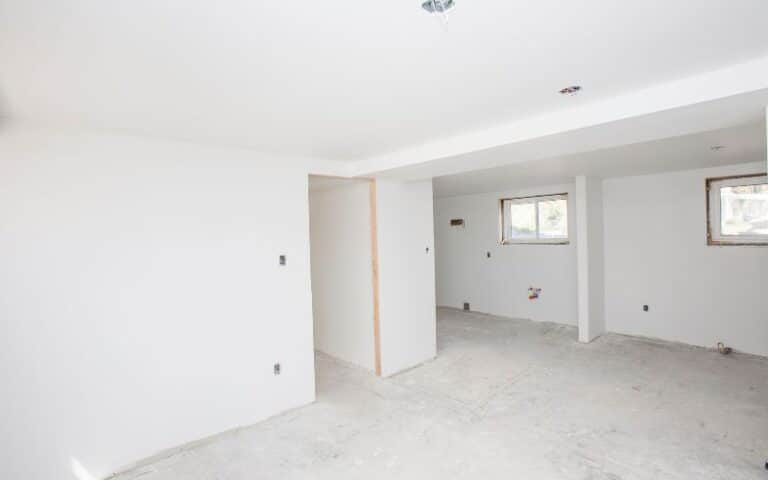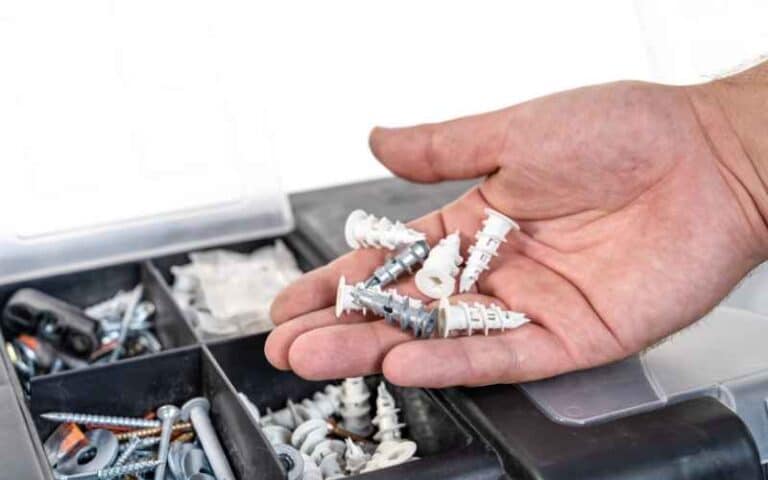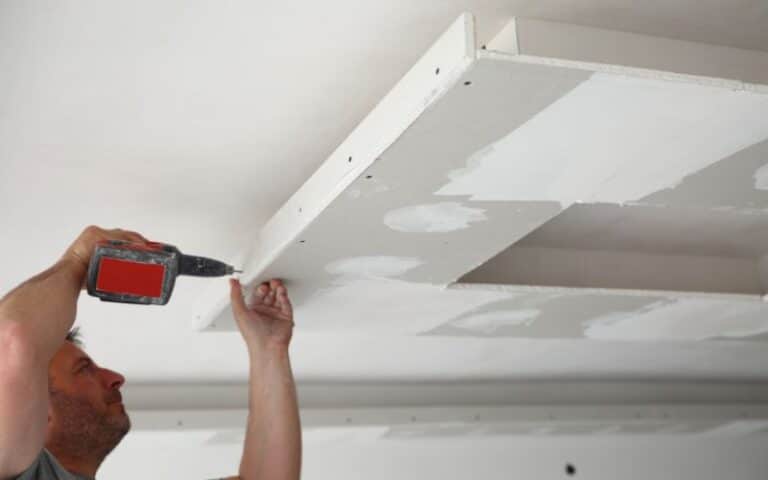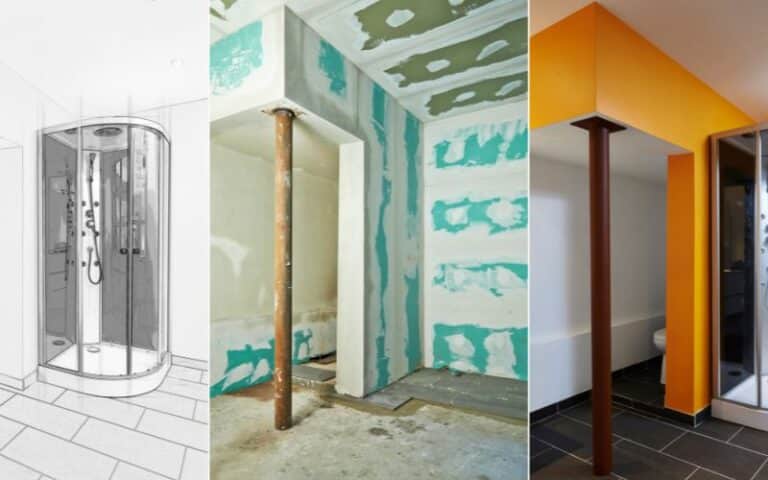Homes look better when designs align satisfactorily, and painted drywalls are the order of the day in many places.
However, many add tiles to the drywall’s edge for a better finish to increase its appeal. Still, others use different wall designs, painted drywalls, and a fully tiled wall.
But to avoid defeating the aesthetic purpose you desire to achieve, a smooth tile-drywall transition is necessary; how can you do that?
To transition from tiles to drywall, you should use a Schluter profile, known as metal edges, caulk, or rail moldings. These trim edges come in various designs and sizes and can help you seamlessly transition while beautifying your wall and home. Also, doing this in an outside corner involves applying a joint compound to make it blend and appear original.
Transitioning from tile to drywall is necessary for a professional finish in outside corners, and here’s a guide to help you achieve it.
Ready for a Drywall Quiz?
How Do You Transition Tiles to Drywall In an Outside Corner?
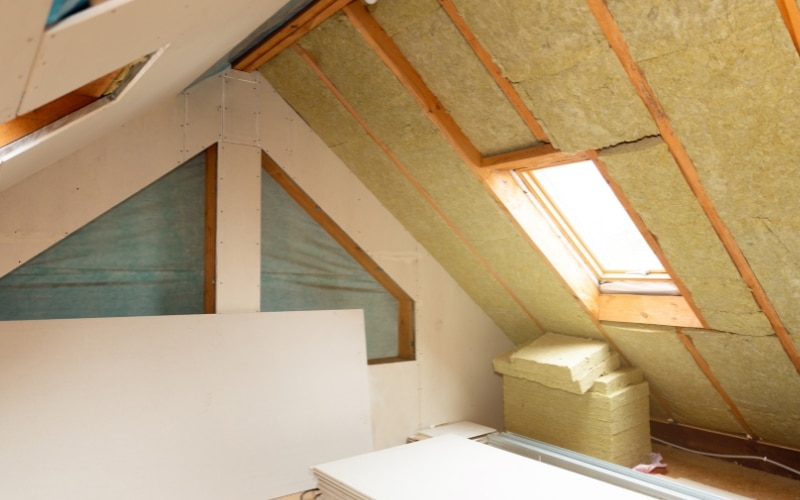
Transitioning from tiles to drywall means adding a trim edge to the joint where the drywall and tiles meet.
The joint where they meet is often open and rough and needs covering up, hence a proper transitioning.
And to achieve this, we’ve put together a list of items you can use to achieve a seamless transition in an outside corner.
#1. Metal Edges
Metal edges like the Schluter trims are well-known for tiling to drywall transition outside corners.
To do this, you should accurately measure the surfaces on which you wish to install the metal edge.
Then, install them on the drywall after measurement and apply the tile mixture before setting them.
Doing this helps you transition smoothly without going overboard in your tiling or having a rough wall.
But remember to choose a metal color that aligns with your tiles and drywall for a cohesive look.
#2. Rail Moldings
Tile moldings are available in different forms, either porcelain or natural stones.
They’re decorative and helpful in smooth transitions between tiles and drywalls, offering a clean appearance.
And there’s no need to worry, as you’re free to choose any molding for the transition if your tile doesn’t come with any.
These rail moldings include chair rails, pencils, or 1/4 round and 1/2 round moldings.
#3. Create a Bullnose Edge
Creating a bullnose edge might seem challenging initially, but bullnose edges are a great option.
It is an incredible trim piece and is common in covering sharper edges or frame open areas where tiles and drywall intersect to make it look excellent.
#4. Mitered Edges
If you dislike the other methods, feel free to choose the miter edges option.
It involves cutting a 45-degree angle on the tile edge and positioning them together to form a 90-degree edge around the area the tile transitions to the drywall.
It’s similar to the bullnose edge trim since it works best with porcelain and stone materials to give your exposed sides a clean and professional look.
#5. Caulk or Grout Edge
Caulk is cost-effective and efficient if you need to do massive work. It works best with the same materials as bullnose and mosaics but not ceramics.
You can caulk the area where the tile transitions to drywall, provided it’s not extensive, and you do it well to give a beautiful finish.
Is Tile to Drywall Transition Good for Outside Corners?
Tile-to-drywall transition is best for outside corners. Inside corners are well, and inside and a change won’t be smooth because there won’t be any area for edge trims to be connected.
Doing this transition on outside corners works best because they have protruded edges.
Below is a table containing the advantages and disadvantages of a tile-to-drywall transition and why it is necessary.
| Advantages | Disadvantages |
|---|---|
| It gives a clean and aligned finish without distracting the room. | Some transitioning options are much more complex (Bullnose), especially for DIY processes. |
| It makes the wall much safer, reducing the risk of injuries from scratching against it. | Some tile trim edges, like metal ones, are vulnerable to rust and require frequent polishing. |
| It cuts down on cleaning and maintaining a rough outside corner. | It can take time to achieve an appropriate edge length for the job. |
| It protects your tile installation increasing its longevity. | Some tile trims are weaker than others, although effective, and can only cover short distances. |
How Do You Finish an Outside Corner at the Tile-drywall Transition?
Before even starting, confirm that your corner is straight and that there are no rough edges around it that could cause bumps and uneven work with no areas sticking out.
Then, you may begin, provided the joint is perfect for the job.
#1. Measurement
Measuring the area of the tile-drywall transition is vital to ensure you use an appropriately sized corner edge trim.
Going over or below the proper length makes your work more stressful and uneven, as the angles might need to be better to get the seamless transition you desire.
Hence, acquaint yourself with how to cut corner trims before beginning.
#2. Apply Joint Compound
An adhesive coat like the joint compound/mud will enable the edge trim to stick to the transition space and fit well.
Using this compound is more recommendable, so apply it on that surface and smoothen it out with a knife before placing the edge trim.
#3. Set the Edge Trim
Afterward, set the edge trim on it and apply the compound on the edge trim. Finally, spread it over till it’s in place to achieve a flush appearance without any area looking uneven.
Can You Use Corner Beads for Tile to Drywall Transition for an Outside Corner?
It is advisable to use corner beads for tile-to-drywall transition as they’re easier to install.
They come in several types, metal, plastic, and more, and can be fixed by screwing them in or applying a joint compound.
Many use joint compounds to avoid drilling holes into the tiles or drywall, while others want to secure them better and choose screws. Regardless of your choice, here’s how to do it.
Apply the joint compound to the open space where the tile transitions to the drywall. Afterward, apply tape on the mud to secure it.
Next, place the corner bead on the corner with adhesive and smoothen it. You can also put more on it for them to stick well together.
And if you choose to screw them in, measure the corner bead and ascertain its length fits the tile-drywall transition before screwing it into the wall.
In conclusion, there are several corner beads, from vinyl to metal, paper, and even bullnose trims.
And all have different ways of installation, allowing you to choose which you prefer. So, decide which will work best in your home’s outside corner and fix it.
FAQs
Is it Mandatory to Use Corner Beads on Outside Corners?
Use corner beads on all outside corners regardless of which type you choose. This bead covers the open surface, protecting it from chipping, and acting as a screed during the taping.
It also adds a professional look to the outside corners of your home.
Does Joint Compound Work for All Corner Beads?
There are different installation methods for corner beads, and you can use joint compound or screws.
But avoid using nails even on metal corner beads, as they can push the corner beads in directions you don’t want. But note that you can always combine using screws with applying mud.
Which is Better, Paper or Metal Corner Bead?
Conventionally, outside corner tile-drywall corners have been associated with nail-on metal corner beads.
But they still need to be better, as paper ones are even simpler and less vulnerable to cracks. So it depends on your preference and the outside corner shape.
Will All Corner Beads Work for the Rounded Wall Outside Corners?
Only flexible corner beads like bullnose and vinyl are best for round wall corners. Using any other one might do the work but won’t give you a flawless finish.
And while requiring significant effort, the bullnose round corner is a perfect look for wall corners and can work well with adhesive and joint compound.
Are Inside and Outside Corner Beads the Same?
Corner beads remain the same regardless of where you use them, but it’s best to use them on outside corners only.
That’s because these outside corners are more vulnerable to damage, unlike inside corners where taping can suffice.


